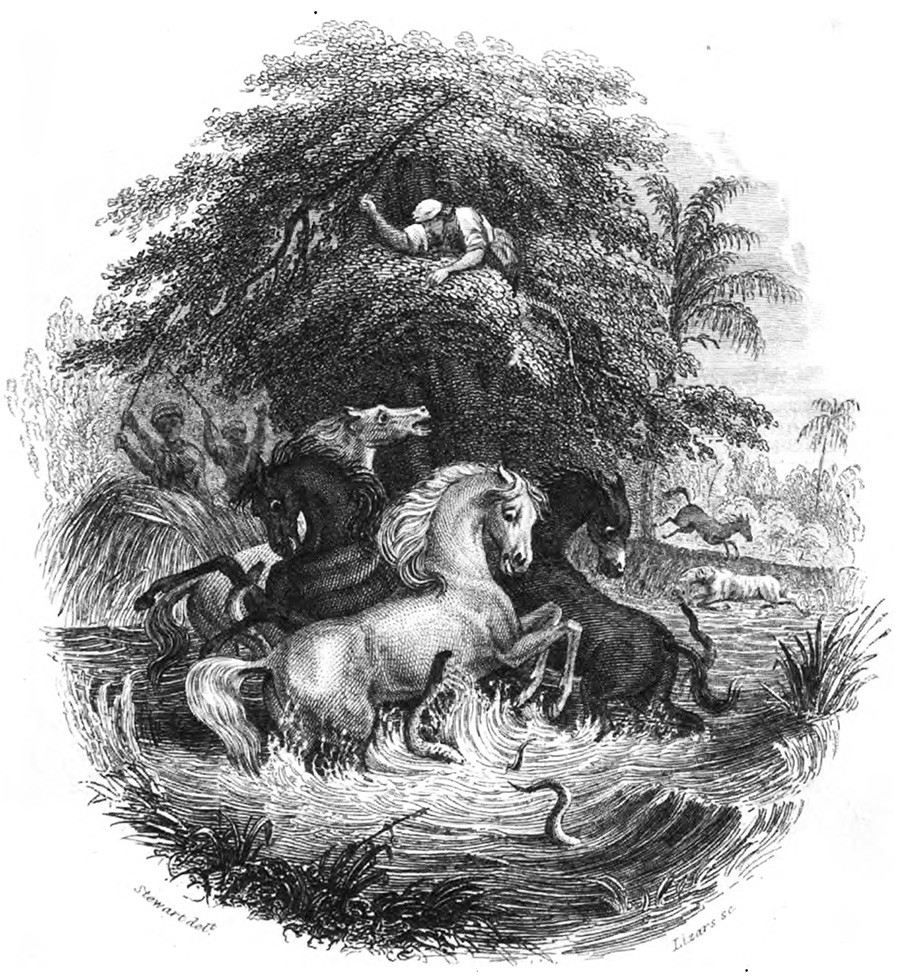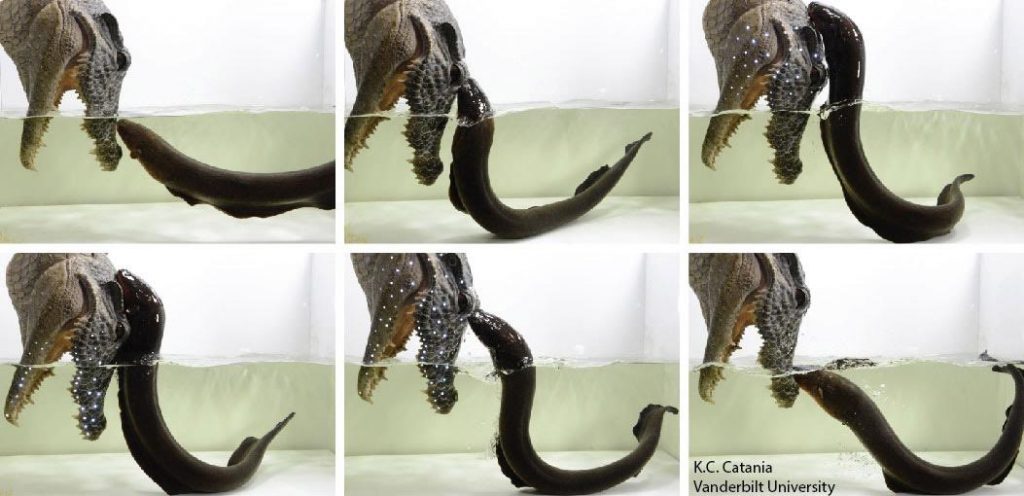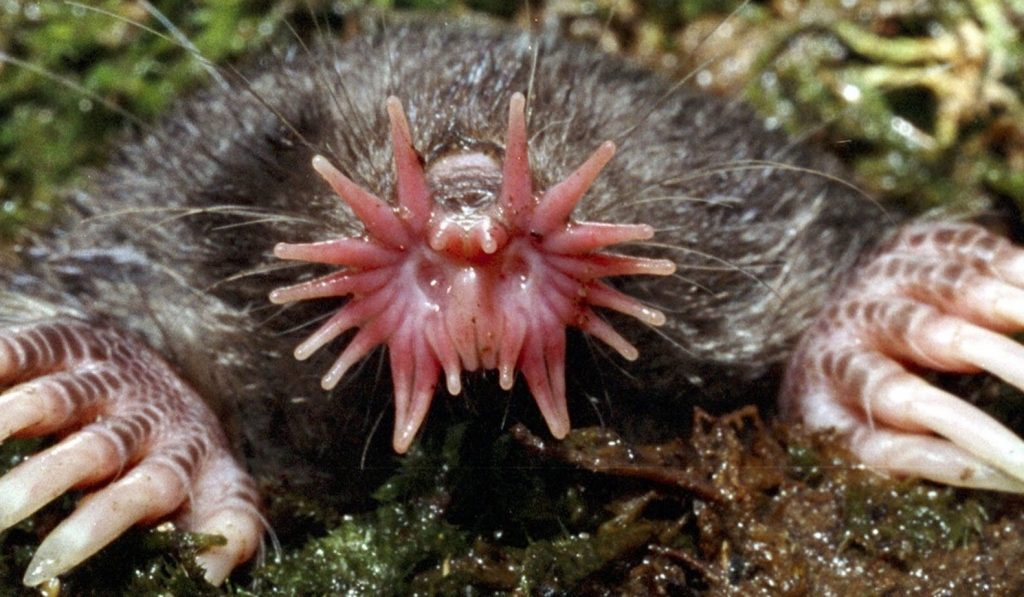Published on March 15th, 2017 | by Caitlin Colleary
Episode 73: Sensory Structures
Ask anyone to list all the senses and they’ll probably stop at five. Touch, taste, sight, smell and hearing are all important to humans, but in the animal kingdom, there exist others. In this interview, Prof. Kenneth Catania, of Vanderbilt University, Nashville, Tennessee, joins us to talk about some of the other ways in which some vertebrates sense their environment.
Podcast: Download (38.7MB)

A historic illustration of Humboldt’s account of a battle between electric eels and horses in South America in 1800.

Schematic Illustration of the Sequence of Events during a Typical Dipole Attack (A) The fish is captured in conjunction with a high-frequency, high-voltage volley (∼400 Hz). (B) The fish cannot be swallowed without being re-positioned. Additionally, the fish is struggling, and each discrete fish movement elicits a brief discharge by the eel. (C and D) The eel curls to bring its head and tail into opposition and delivers a series of high-voltage volleys, each at ∼100 Hz with variable duration. (E and F) Less than 500 ms after the dipole attack, the fish is released and repositioned for a head-first swallow in conjunction with high-voltage discharges.

A) Electric organ discharge corresponding to plates below. Arrow indicates low-amplitude discharge. (B) Video frames showing that fish movement is arrested by discharge. Red frames indicate electric organ discharge (movie S1). (C) The utility of the discharge illustrated. Shown are the prey fish at 40 ms (green) and later, the position and velocity of the eel and fish at 160 ms (red fish). Green dotted fish outline shows velocity and location of uninterrupted escaping fish matched in time, size, and position from 40 ms, suggesting that the eel would have missed without the discharge.

These images show an electric eel attacking a model of a crocodile’s head fitted with LEDs that the eel’s electric impulses light up. The sequence runs from the top left to the bottom right. See video in header
Eels emit two different magnitudes of electric organ discharge. The low amplitude discharge is used for exploring their environment and does not function in offence of defence. This video shows an eel emitting its low voltage electric organ discharge followed by an example of a high-voltage volley during prey capture.
This movie shows examples of a eel capturing fish in slow motion. Red frames have been colorized to indicate each time a high-‐voltage pulse was emitted. In some cases, when the eel discharge frequency slow, fish regain the ability to move and escape.
This movie shows an eel, filmed from the side, as it uses doublets while hunting a tadpole below agar. As the tadpole moves in response to each doublet the eel followed and eventually attacks following a doublet (see trace of electric organ discharge at end of movie).












